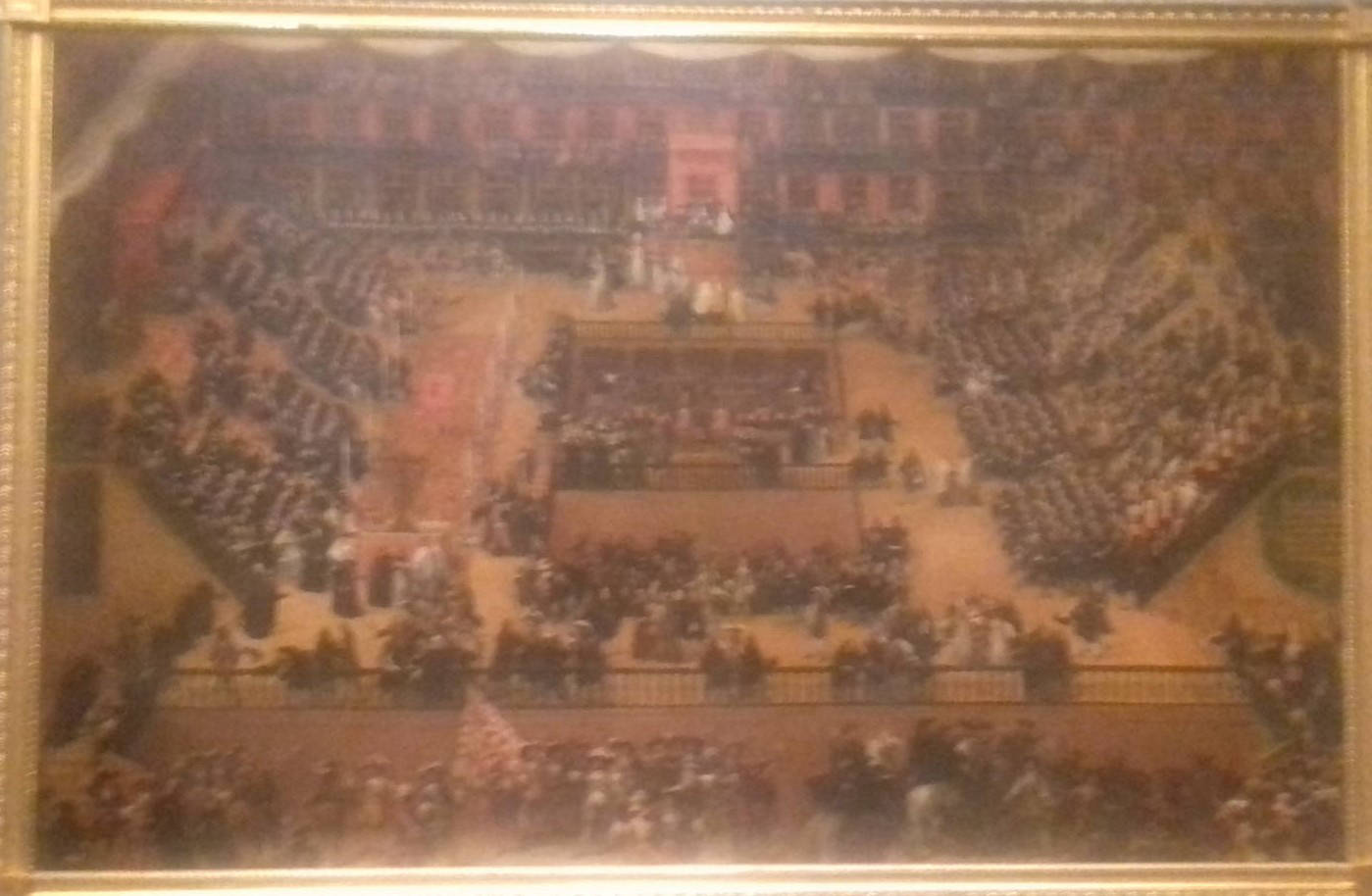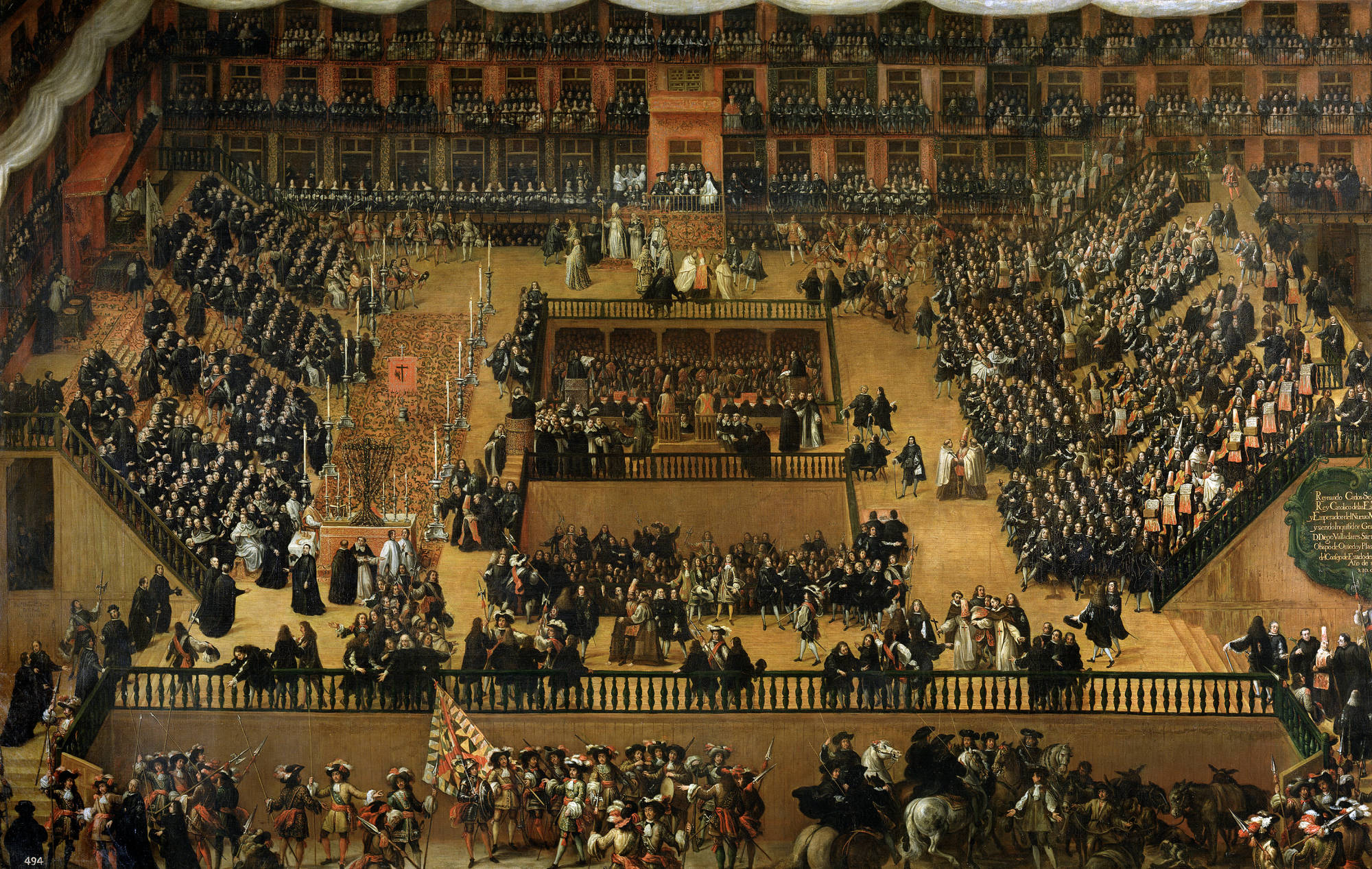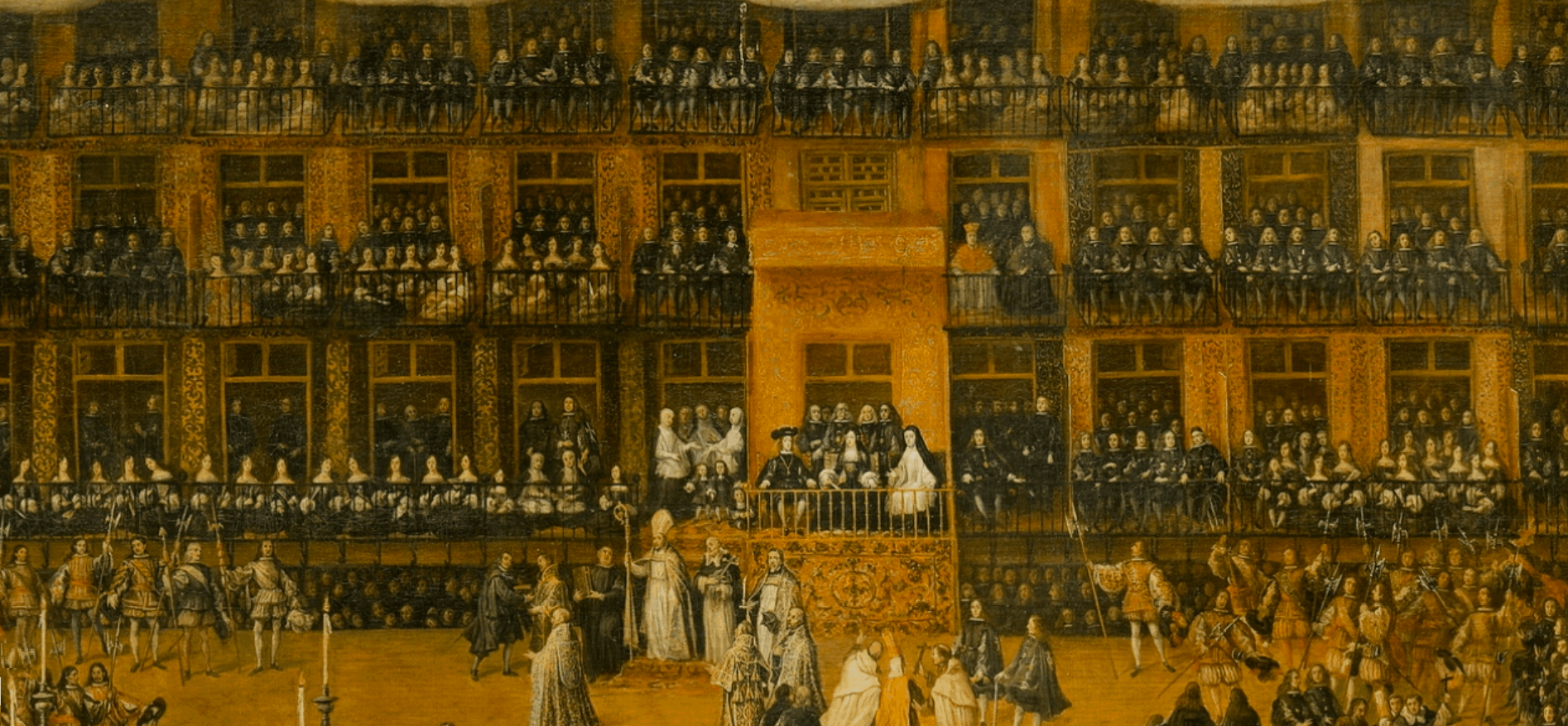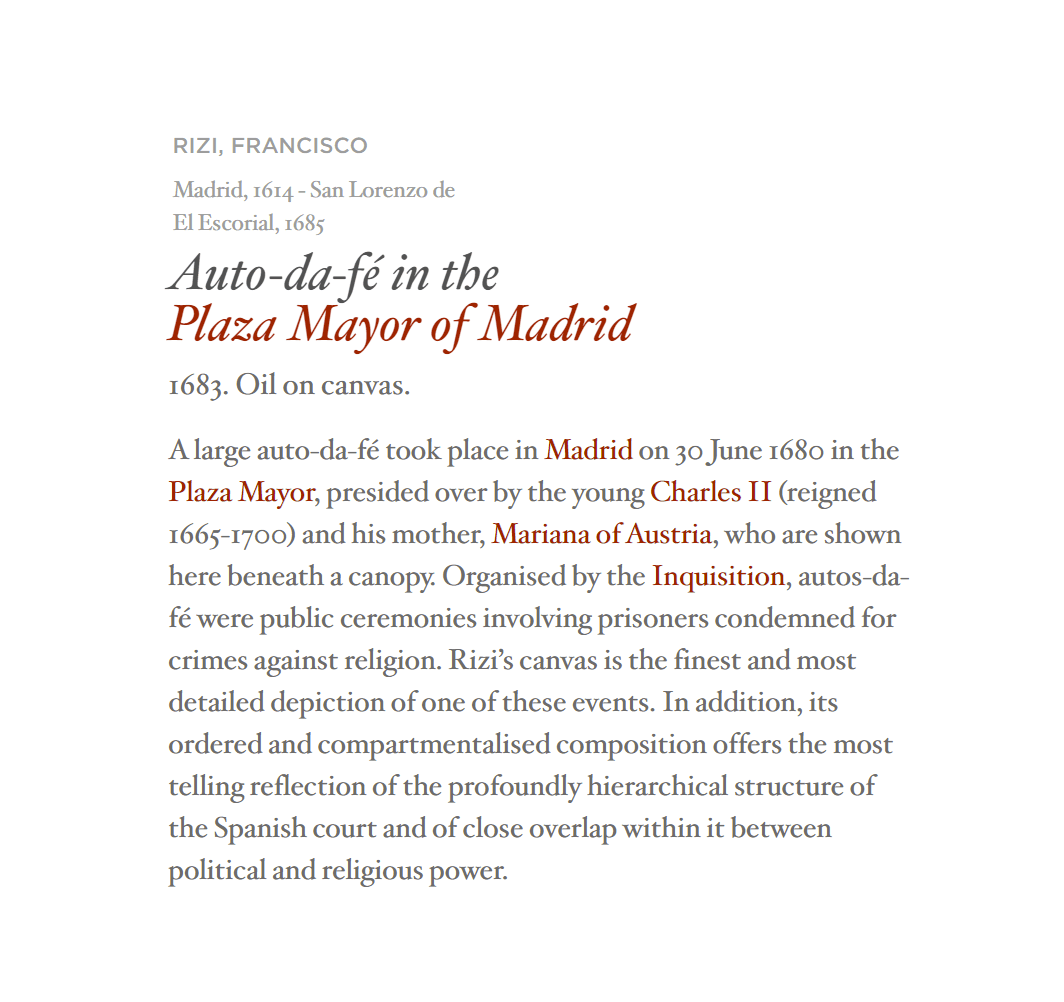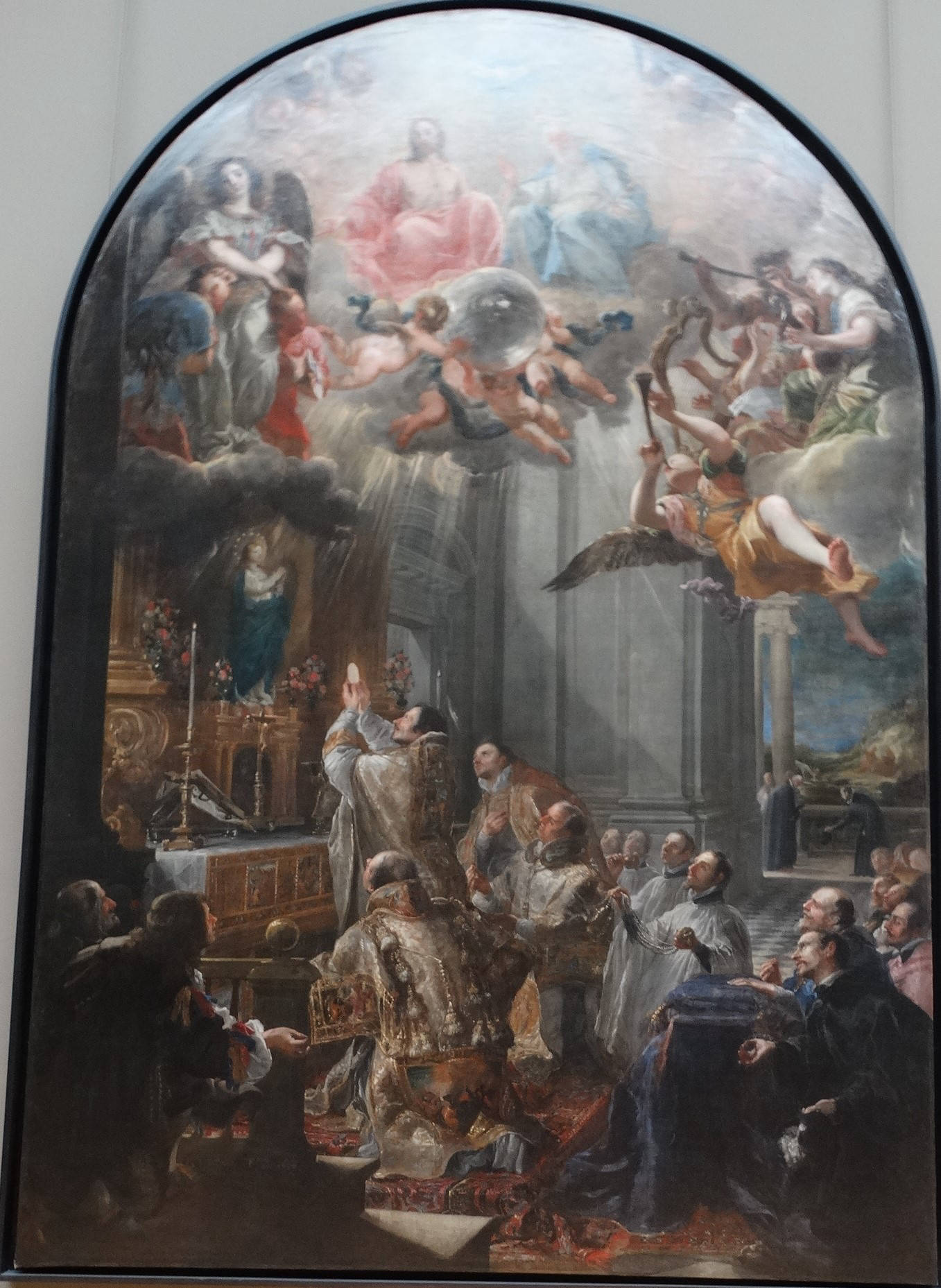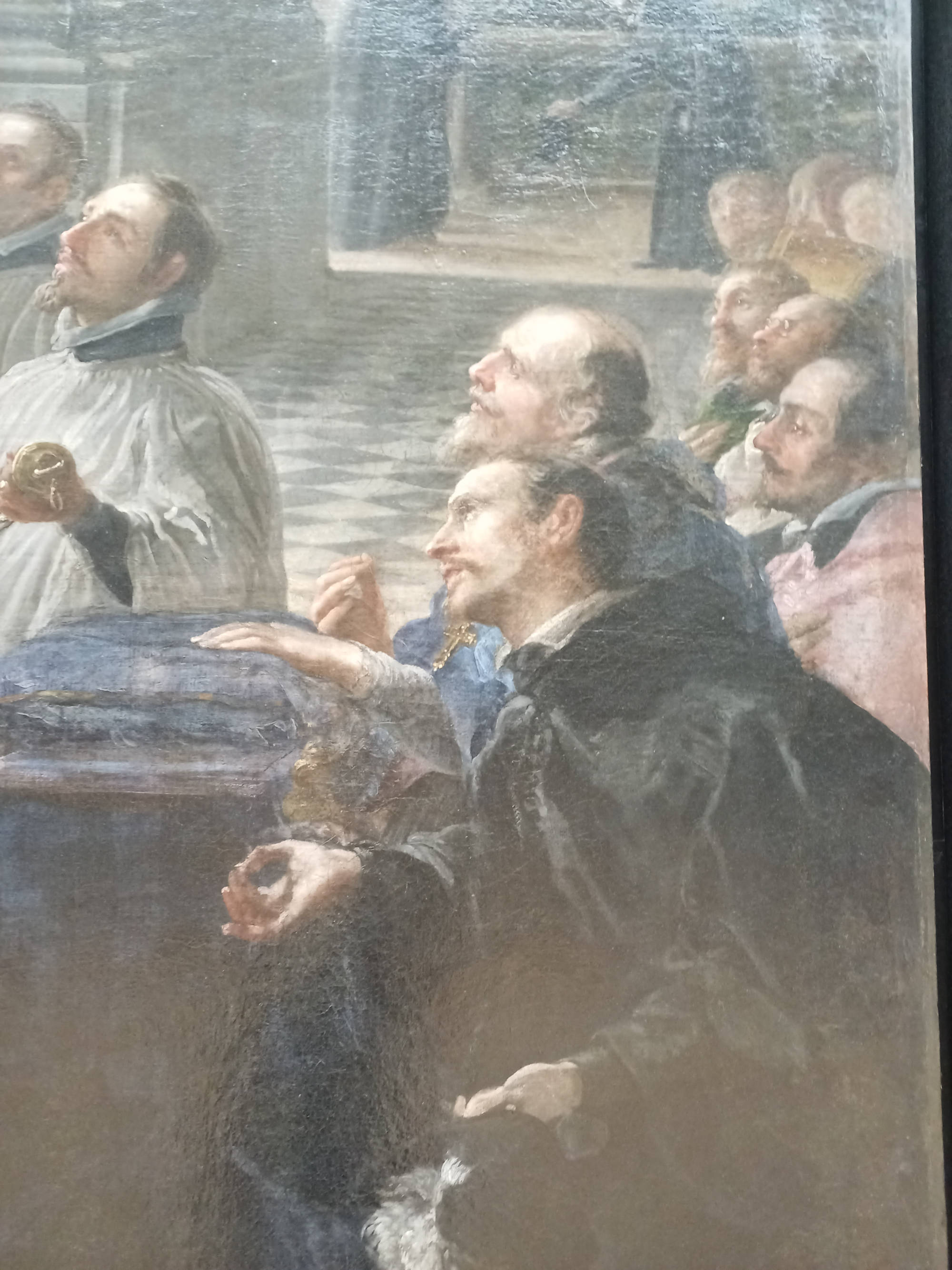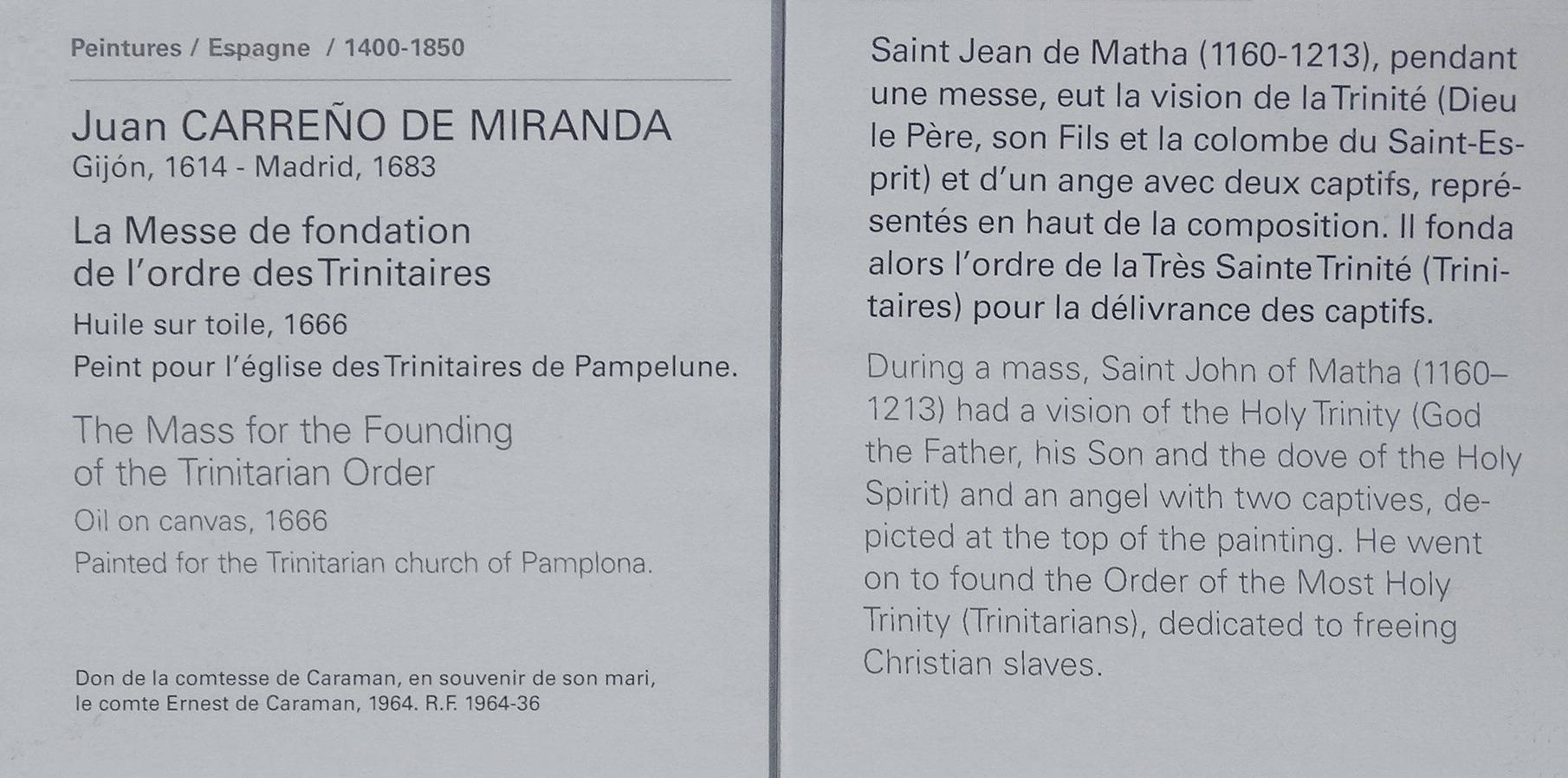Francisco Rizi, or Francisco Ricci de Guevara (1614 – 1685)
• Was a Spanish painter of Italian ancestry.
• He was born in Madrid.
• His father, Antonio Ricci, was an Italian painter, originally from Ancona, who had come to Spain in 1583 to do decorative work at El Escorial.
• His brother, Juan, also became a painter.
• After beginning his apprenticeship in his father's workshop, he studied with Vicente Carducho.
• Thanks to Carducho's influence, he was able to make contacts at the Royal Court in 1634.
• After Carducho's death in 1638, he joined with several other painters to create decorations for the Golden Salon at the Royal Alcázar of Madrid.
• Rizi became one of the earliest painters in Spain to adopt the Baroque style.
• He also maintained close ties to Toledo Cathedral, creating numerous canvases and frescoes.
• In 1653, he was named the official "Painter of the Cathedral", and would retain that position until his death.
• In 1656, he was officially named a "Painter to the King".
• This began a large series of commissions from religious institutions that would keep him occupied throughout the 60s.
• He also opened a workshop where artists such as Claudio Coello received their first training.
• For many of these years, and into the 70s, he was the Director of stage decorations at the theater in Buen Retiro Palace.
• In 1661, he was granted permission to live in the Royal Alcázar.
• In 1675, the Queen granted him a small pension, but his standing at court never fully recovered.
• He continued in good standing with religious authorities, however.
• In 1685, he received a major commission for a monumental canvas at El Escorial, depicting the "Holy Form".
• He died suddenly while working on it there.
• It was finished by his student, Coello.
• Next
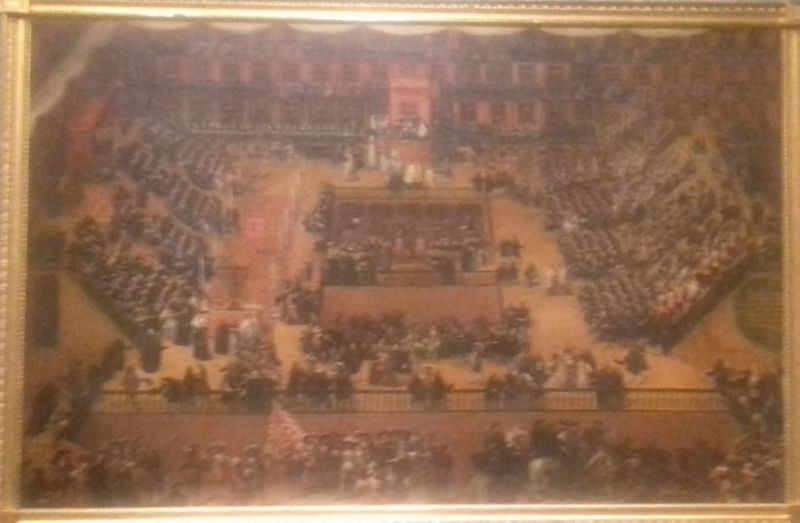 Francisco Rizi, Auto-da-fe in the plaza mayor of Madrid, 1683
Francisco Rizi, Auto-da-fe in the plaza mayor of Madrid, 1683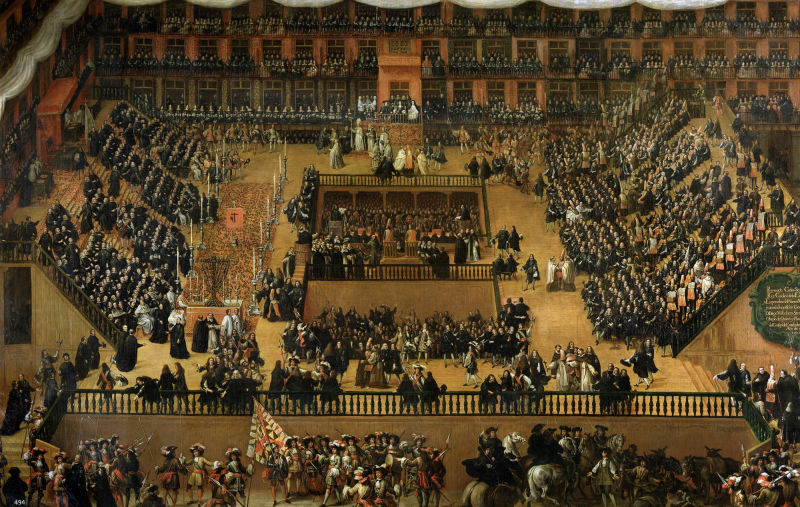 Original, El Prado, Madrid. Visited in 2018.
Original, El Prado, Madrid. Visited in 2018.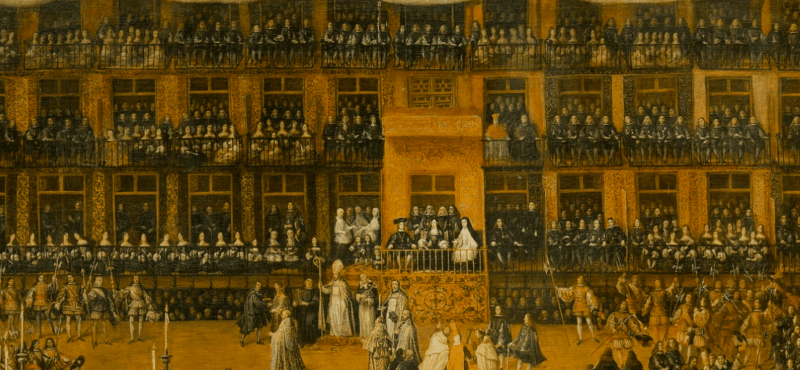 Francisco Rizi, Auto-da-fe in the plaza mayor of Madrid, 1683
Francisco Rizi, Auto-da-fe in the plaza mayor of Madrid, 1683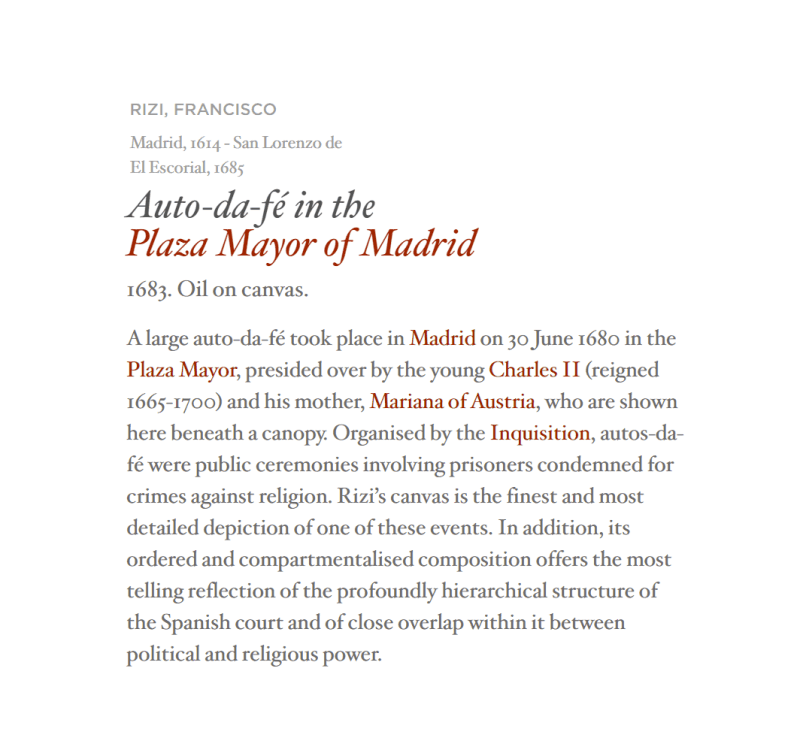 Francisco Rizi, Auto-da-fe in the plaza mayor of Madrid, 1683
Francisco Rizi, Auto-da-fe in the plaza mayor of Madrid, 1683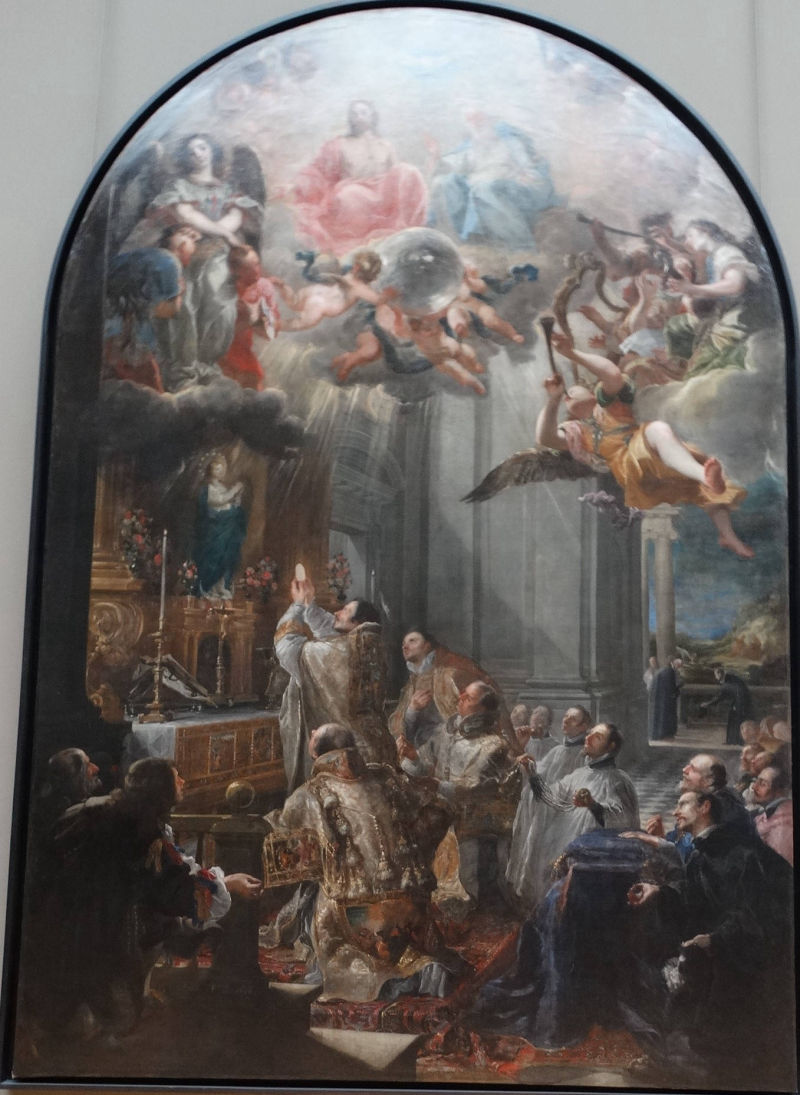 Juan Carreño de Miranda and Francisco Rizi, The Foundation of the Order of the Trinitarians, 1666.
Juan Carreño de Miranda and Francisco Rizi, The Foundation of the Order of the Trinitarians, 1666.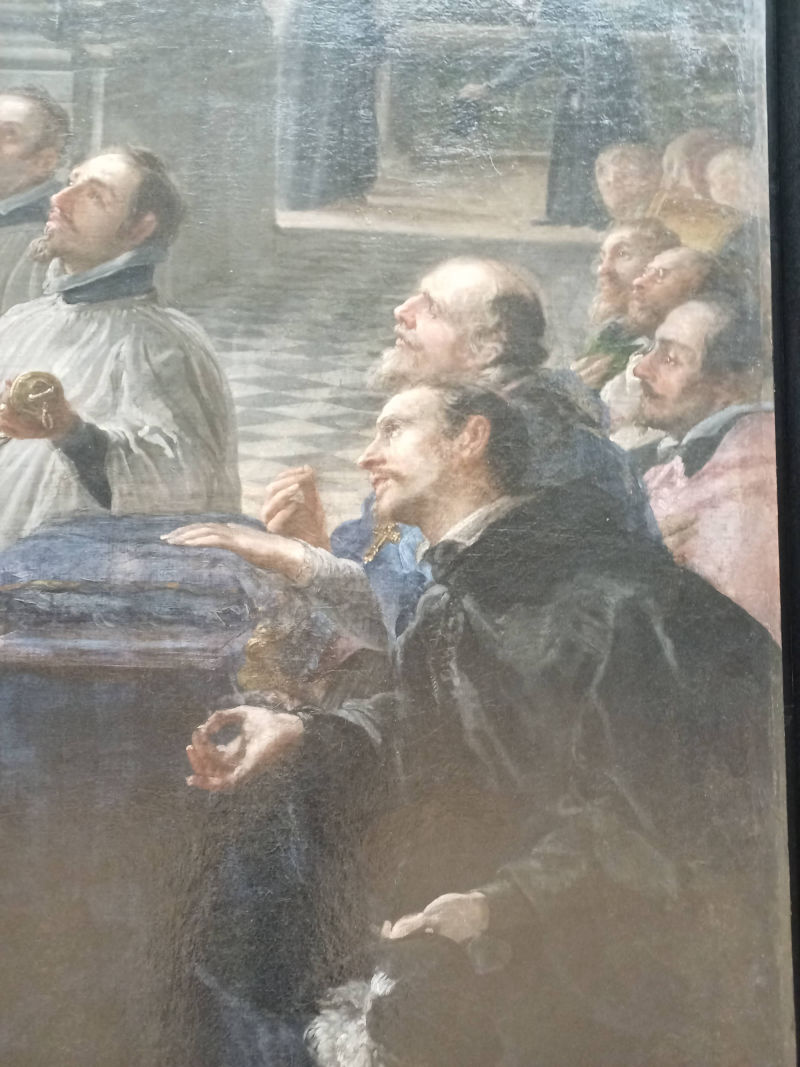
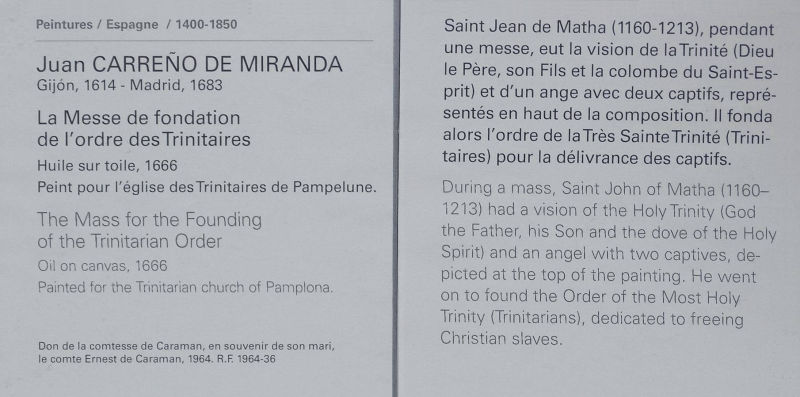 Juan Carreño de Miranda and Francisco Rizi, The Foundation of the Order of the Trinitarians, 1666.
Juan Carreño de Miranda and Francisco Rizi, The Foundation of the Order of the Trinitarians, 1666.